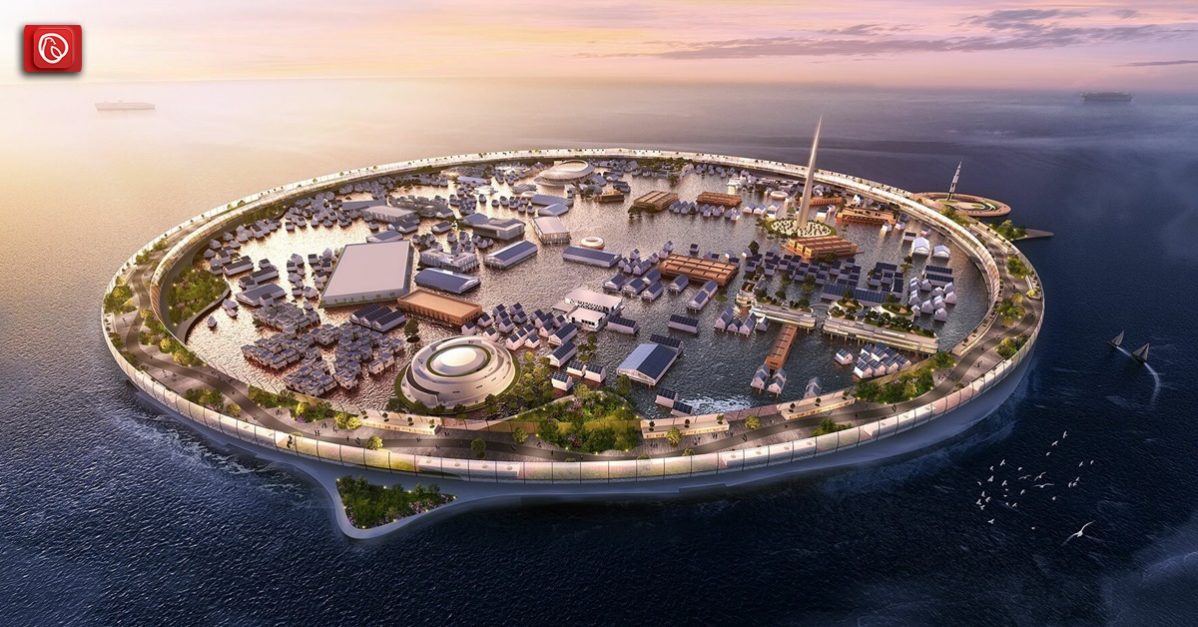
In response to the rising sea levels, N-Ark, a Japan-based maritime start-up have conceptualized a revolutionary idea – a floating city capable of accommodating up to 40,000 residents. Recently, the N-Ark unveiled plans for an extraordinary project called Dogen City. This visionary floating city aims to tackle the challenges posed by rising sea levels while providing a self-sustaining habitat for up to 40,000 residents.
With a unique circular design and a focus on tourism, medical facilities, and even space exploration, Dogen City promises to be a groundbreaking achievement in architecture and sustainability.
Graana.com shares all the details about this ambitious project and how it aims to create a self-sustaining and environmentally friendly community that can thrive even in the face of adversity.
At the core of Dogen City’s design is its circular form, measuring an impressive 4 km (approximately 2.5 miles) in circumference. This circular structure serves as a protective barrier against severe weather conditions, including tsunamis, safeguarding the city and its inhabitants.
By creating a sheltered bay within the ring-shaped structure, Dogen City offers a tranquil environment for floating architecture, blending natural beauty with cutting-edge technology.
Dogen City’s layout is divided into three distinct areas, each serving a unique purpose:
This zone encompasses the primary housing area and supports up to 10,000 full-time residents. Along with residential units, the habitable ring features green spaces, schools, sports areas, hospitals, parks, stadiums, hotels, and offices. It offers a vibrant and self-contained community where residents can live, work, and enjoy recreational activities.
Situated beneath the ocean’s surface, the undersea data centre acts as the nerve centre of Dogen City. Cooled naturally by the surrounding seawater, this facility hosts city management operations and conducts advanced medical research. The data centre ensures the seamless functioning and organization of the entire city.
Within the sheltered bay created by the ring-shaped structure, a variety of floating architecture is envisioned. These structures may include additional residential areas, recreational facilities, and tourist attractions. The artificial bay will serve as an idyllic space for visitors and residents to immerse themselves in the beauty of their surroundings.
Dogen City places great emphasis on sustainability, aiming to fulfil the needs of its inhabitants while minimizing its ecological footprint. N-Ark’s ambitious plans envision the following:
With an estimated annual water consumption of 2 million litres (approximately 530,000 gallons), Dogen City adopts a modest approach to water usage. Innovative recycling and desalination technologies will likely be employed to meet this need. Additionally, the city plans to handle waste disposal responsibly, with 3,288 tons of garbage disposed of annually.
The self-sufficiency of Dogen City extends to food production, with plans to cultivate almost 7,000 tons of food each year. The city’s floating architecture is expected to incorporate state-of-the-art hydroponic and vertical farming systems to support this goal.
Furthermore, the renders reveal an abundance of solar panels, indicating a substantial reliance on renewable energy sources. Dogen City aims to generate 22,265,000 kW of power annually, promoting a sustainable and environmentally friendly lifestyle.
Dogen City aims to provide comprehensive healthcare facilities, leveraging cutting-edge technology to address residents’ medical needs. The city will offer telemedicine consultations, allowing residents access to medical professionals remotely.
High-tech blood analysis systems will enable early detection of health issues, while robotic surgery and drug research will further enhance the medical capabilities of Dogen City.
It is clear that this groundbreaking concept holds immense potential in addressing the challenges of rising sea levels. By offering a sustainable and resilient living environment, the city showcases the power of human ingenuity and the ability to adapt to a changing world.
For more information, visit Graana blog.
Matiari, a district in Sindh province rich in history and culture, is well-known for its…
The Indus Highway, officially called National Highway 55 (N-55), is a 1264 km two—to four-lane…
Khairpur Tamewali is a town located in Bahawalpur, Pakistan. Known initially as Tanori, named after…
Amidst the lush valleys of the Malakand region in Khyber Pakhtunkhwa, Pakistan, lies the city…
Situated at the base of a hill with natural springs and shaded by a verdant…
Phool Nagar is in Pakistan's Punjab Province, in the Kasur District. It changed its name…